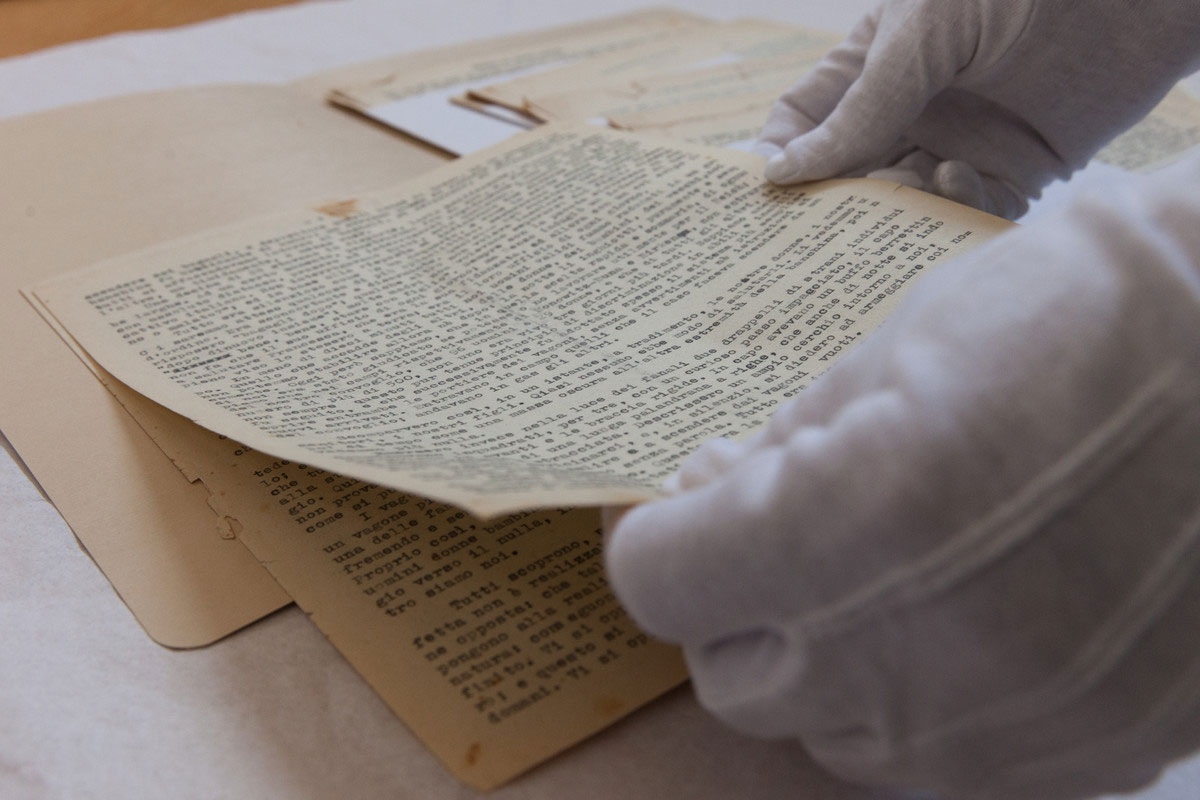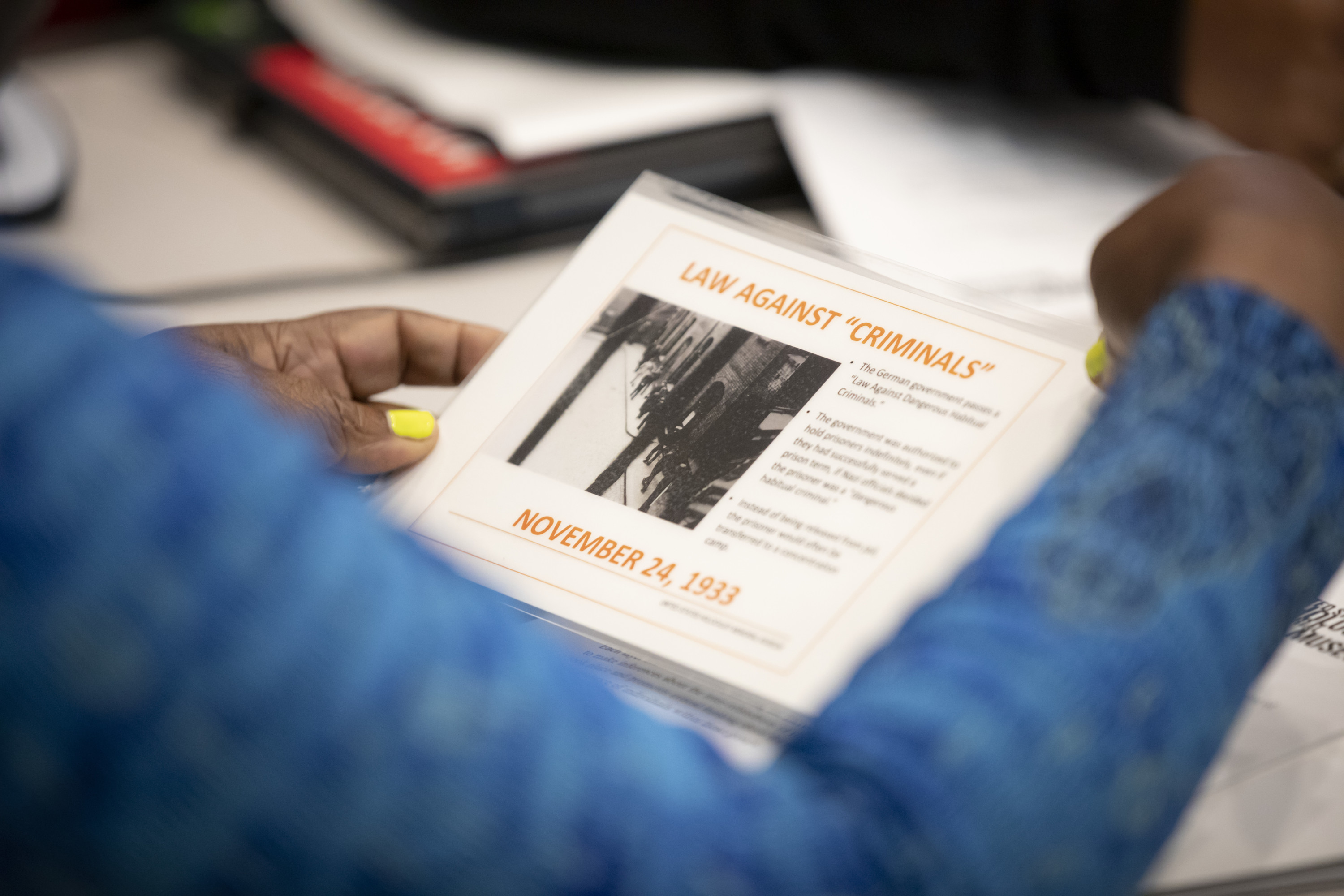Camps System
Intended for use in undergraduate classrooms, this primary source supplement looks at the Nazi camps system through documents found in the International Tracing Service Digital Archive. The guide contains information on how to use the archive to research the camp system, questions for analysis and discussion, and related research topics.
Diaries as Historical Sources
Students study examples of diaries written by young people during the Holocaust, particularly examining the ways in which Anne Frank, the most famous diarist of the Holocaust, thought about her audience while writing.
Holocaust Encyclopedia Articles
The following related articles contain critical learning questions that can be used when discussing article content with students.
First Person: Conversations with a Survivor
Join Holocaust survivors for live First Person conversations as they share their experiences in their own words. This guide provides scaffolding to integrate the First Person conversations into your classroom. By viewing First Person testimony, students are exposed to the diversity of experiences of Holocaust survivors.
Guide to The World Must Know
The book The World Must Know provides a narrative of the Holocaust “as told in the United States Holocaust Memorial Museum.” Its structure mirrors that of the Museum’s Permanent Exhibition: The Holocaust.
Holocaust Narrative through Historical Photos
This lesson provides a method of assessing what students know and how they think about the Holocaust. Through interacting with a range of historical photographs and images, students generate questions that can then lead to more productive lesson planning.
Hoecker/Auschwitz Albums Photo Analysis
Students will examine photographs taken in and around the Auschwitz-Birkenau concentration camp and killing center in 1944 and engage in photo analysis techniques to deconstruct the photographs.
Modern-Day Genocide, A Study of the Rohingya Minority in Burma
By exploring the online exhibition Burma’s Path to Genocide, students learn how government policies and the proliferation of hate speech led to genocide of the Rohingya.
Rescue and Survival in Hiding
This lesson focuses on the role that everyday objects play in our understanding of historical events.
Resistance During the Holocaust
Students learn the various forms of resistance during the Holocaust and explore examples from 1933–45.
Student Visitation Guide
This handout will guide students through the Museum’s Permanent Exhibition, The Holocaust, helping them think about how and why the Holocaust happened. There is one highlighted stop or section on each floor, and students will be prompted to select an artifact or photograph that is meaningful to them.
Three Minutes in Poland
Students view archival film footage documenting Jewish life in a small town in Poland before the German invasion in September 1939. They then explore how the community changed during the Nazi occupation.
Using Survivor Testimony
As you teach about key historical topics, incorporating survivor testimony personalizes the history, emphasizes its impact on individuals, and highlights the diversity of individual experiences. This lesson includes survivor testimonies from the Museum’s collection that help illustrate and personalize the lessons of the Holocaust.
Virtual Field Trip
In this lesson, students examine how the Museum uses artifacts and photographs from its collections to present the history of the Holocaust and memorialize its victims—including artifacts and photographs that illustrate important aspects of Holocaust history. This lesson is intended for use with the virtual field trip The Holocaust: History and Memory.
Women Under Nazi Persecution
Intended for use in undergraduate classrooms, this primary source supplement examines the roles of women under Nazi persecution through documents and photographs found in the ITS Digital Archive. The guide contains an overview essay authored by an expert in the field, information on how to use the archive to research the camp system, questions for analysis and discussion, prompts for further research, and suggestions for further reading on related research topics.





